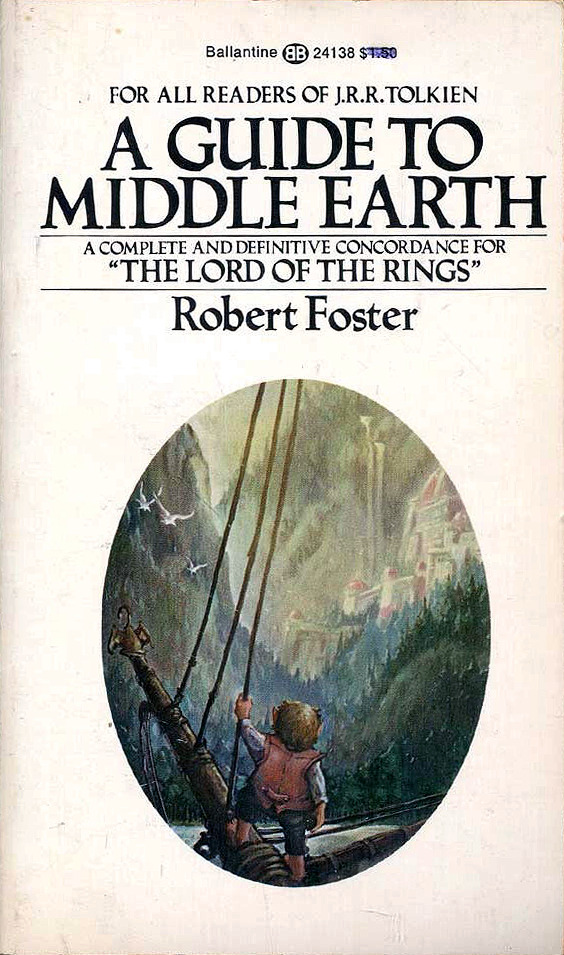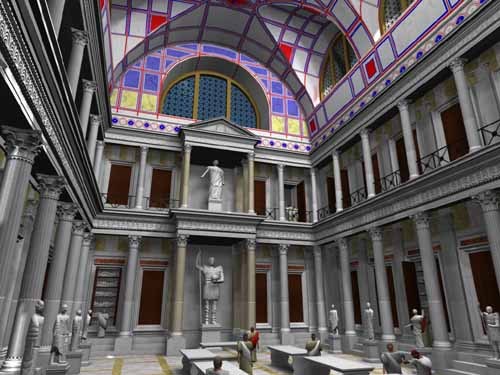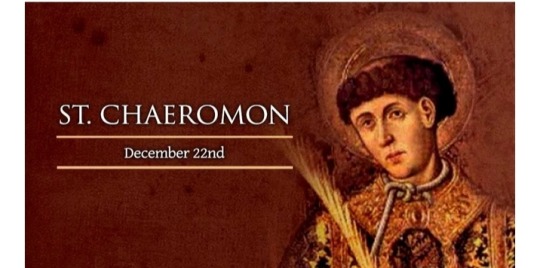#trajanus
Explore tagged Tumblr posts
Text
Verloren geld
Er bestaat dus niet het minste bewijs dat de Romeinen een nederzetting hebben in de laaggelegen graslanden van Ieper, daar waar eeuwen later de ‘Burgus de Ipra’ zal gebouwd worden. Op een archeologische kaart van historicus Vander Maelen staat vermeld dat er in de buurt van Ieper Romeinse munten worden gevonden. Rond 1872 worden er in Ieper inderdaad verschillende stukken aardewerk opgegraven…
#aardewerk#bodem#Caesar#diverticulum#Dranouter#Mars#Merkem#munten#museum#Romeinen#Romeins#Steenstraete#Trajanus#Viroviacum#vondsten#Westhoek#Widisgat#Wijtschate
0 notes
Text
Trajanus (1939), not to be confused with Trajan (1989). Trajan is based on Roman inscriptions, but Trajanus is based on early modern printing.


Cover illustration by Tim Kirk
Info from ISFDB
11 notes
·
View notes
Text



3D reconstruction of the Roman Library in Trajan time (reign 98-117)
The Bibliotheca Ulpia ("Ulpian Library") was a Roman library founded by the Emperor Trajan in AD 114 in the Forum of Trajan, located in ancient Rome. It was considered one of the most prominent and famous libraries of antiquity and became a major library in the Western World upon the destruction of the Library of Alexandria in the 3rd century. It is the only Roman library known to have survived until the Fall of Rome in the mid-fifth century.
The library was named Ulpia because the emperor's name was Marcus Ulpius Trajanus, and he came from the Ulpii. The XXX Legion was also named Ulpia. Trajan was the last Roman emperor to conquer territories and the one who went the furthest. The Senate gave him the title Optimus, which means "The Best", and indeed he is among the greatest emperors in the entire history of Rome. In Romania, Trajan is considered the founder of the Romanian nation, Romanian language has a marked Latin root.
Pliny the Younger, who at the age of 16 saw the infamous eruption of Vesuvius in 79 AD, belonged to the close circle of the emperor Trajan. In Trajan's time, Pliny the Younger was already a renowned writer.
(I have no info about the author of these 3D reconstructions)

82 notes
·
View notes
Text
in case anyone else cares i scrolled through the imnotokay.net fonts thread and found fonts mcr have used or close to duplicates
i brought you my bullets you brought me your love album cover: miserable
early promo & three cheers for sweet revenge: mom's typewriter/adler
three cheers for sweet revenge cd: trajanus bricks
the black parade: bones bummer/angry blue
73 notes
·
View notes
Text
SAINT OF THE DAY (December 22)

Not much is known about the life of St. Chaeromon, except that he was a bishop of Nilopolis in Egypt who was already advanced in age when Emperor Trajanus Decius began the intense persecution of Christians.
Chaeromon and his companions fled to Arabia, and are believed to have been martyred there.
3 notes
·
View notes
Text






Wat? Voorwerpen uit de schat van Sacoşu Mare (1200-900 v. Chjr.), Ringetjes uit de schat van Braşov en de schat van Apoldul de Sus (1000-900 v. Chr.), Helm van Coƫofeneşti met detail (ca. 450 v. Chr.), Zilveren draken uit de Schat van Soloneƫu Nou (ca. 100 v. Chr.) en Zilveren armband van Lupşa (ca. 50 v. Chr.)
Waar? Tentoonstelling Dacia – Rijk van goud en zilver in Drents Museum, Assen
Wanneer? 7 september 2024
Ik had hun naam wel eens gehoord: de Daciërs. Als je me echter had gevraagd waar dit volk ooit leefde, had ik je het antwoord schuldig moeten blijven. Dankzij een, als altijd fraai vormgegeven, archeologische tentoonstelling in het Drents Museum weet ik dat nu wel. De Daciërs leefden vanaf de tweede eeuw voor Christus in wat nu Roemenië is. Hoogtepunt van het Dacische rijk was onder koning Boerebista, die regeerde van 82 tot 44 voor Christus. In 106 na Christus, na twee felle oorlogen, werd Dacië door keizer Trajanus ingfelijfd in het Romeinse Rijk.
De Daciërs beschikten over veel goud en zilver dat door kundige edelsmeden tot fraaie objecten werd gevormd. De voorouders van de Daciërs maakten al sinds 4500 voor Christus gouden objecten, zoals sieraden en kommen. Ook produceerden ze veel gouden ringetjes, waarvan de functie onbekend is. Wellicht werden ze gebruikt als betaalmiddel.
Door de geschiedenis heen veranderden Dacische symbolen. In de bronstijd (2100-850 v. Chr.) zijn veel spiraalvormen te zien als verwijzing naar de zonnecultus. In de vroege ijzertijd (850-450 v. Chr.) worden invloeden van andere culturen zichtbaar. Dieren, en met name het paard, spelen dan een belangrijke rol. In de late ijzertijd (450 v. Chr. – 106 n. Chr.) ontwikkelen de Daciërs een eigen symboliek. De ‘Dacische Draco’ is een kruising tussen een wolf en een slang.
Aanvankelijk werden de objecten vooral gemaakt om te offeren aan de goden en om mee te geven aan overledenen in hun graf. Opmerkelijk daarbij is dat de voorwerpen soms met opzet werden beschadigd. Later veranderde het gebruik van goud en werden voorwerpen gemaakt om mee te pronken of als versiering van bijvoorbeeld paardentuigen.
Een fraai voorbeeld van een pronkstuk is de Helm van Coƫofeneşti. Spelende kinderen ontdekten de helm in 1927 na een zware regenbui waarbij de grond die hem bedekte was weggespoeld. Ze namen de helm mee naar huis, waar hij een tijdlang als drinkbak voor de dieren werd gebruikt. Inmiddels is duidelijk dat het om een pronkhelm gaat met afbeeldingen uit de Getische mythologie. De versieringen laten invloeden zien uit verschillende culturen.
In de 1e eeuw voor Christus werd goud voorbestemd voor offers en de koninklijke schatkist. Het gebruik van zilver voor persoonlijke voorwerpen nam toe. Ook de versieringen veranderden. Geometrische vormen en plantenmotieven namen de plaats in van dieren.
Menselijke afbeeldingen zijn schaars in de Dacische kunst. Een voorbeeld is de versiering op de uiteinden van een zilveren armband. Aan de einden is een mensenhoofdje met een plat hoedje te zien.
2 notes
·
View notes
Text

SAINTS DECEMBER 23
Martyrs of Crete, Ten Roman Catholic martyrs of the island of Crete who suffered during the persecution of Emperor Trajanus Decius. They are named Agathopus, Basilides, Eunician, Euporus, Evaristus, Cleomenes, Gelasius, Saturninus, Theodulus, and Zoticus. Feastday: December 23
St. Victoria, Roman Catholic Martyr, with her sister Anatolia, she refused importunate suitors. Both were imprisoned and starved by their suitors but persisted in refusing marriage. Anatolia was converted to Christianity and converted many in Picenum before being denounced for her faith, for which she was tortured and executed at Thora on Lake Velino in Italy. When Victoria refused to sacrifice to pagan gods, she too was executed, perhaps at Tribulano. The guard was converted by their example and was also martyred. Feastday Dec.23rd.
St. John of Kanty, Roman Catholic priest, scholastic philosopher, physicist and theologian, Born in Kęty, Poland, in 1390, John was a priest and professor of philosophy at the University of Krakow. He was chosen as tutor to Polish princes. With his pay he fed the poor, whom he sought in the city streets. Esteemed by all for his charity, he died during the Christmas Eve Mass of 1473 Feastday Dec.23rd.
0 notes
Text
Events 10.28 (befre 1920)
97 – Roman emperor Nerva is forced by the Praetorian Guard to adopt general Marcus Ulpius Trajanus as his heir and successor. 306 – Maxentius is proclaimed Roman emperor. 312 – Constantine I defeats Maxentius, becoming the sole Roman emperor in the West. 969 – The Byzantine Empire recovers Antioch from Arab rule. 1344 – The lower town of Smyrna is captured by Latin Christians in response to Aydınid piracy during the Smyrniote crusades. 1420 – Beijing is officially designated the capital of the Ming dynasty when the Forbidden City is completed. 1449 – Christian I is crowned king of Denmark. 1453 – Ladislaus the Posthumous is crowned king of Bohemia in Prague. 1492 – Christopher Columbus lands in Cuba on his first voyage to the New World, surmising that it is Japan. 1516 – Second Ottoman–Mamluk War: Mamluks fail to stop the Ottoman advance towards Egypt at the Battle of Yaunis Khan. 1520 – Ferdinand Magellan reaches the Pacific Ocean. 1531 – Abyssinian–Adal war: The Adal Sultanate seizes southern Ethiopia. 1538 – The Universidad Santo Tomás de Aquino is founded in what is now the Dominican Republic. 1628 – French Wars of Religion: The Siege of La Rochelle ends with the surrender of the Huguenots after fourteen months. 1636 – The Massachusetts Bay Colony votes to establish a theological college, which would later become Harvard University. 1640 – The Treaty of Ripon is signed, ending the hostilities of the Second Bishops’ War. 1664 – The Duke of York and Albany's Maritime Regiment of Foot, later to be known as the Royal Marines, is established. 1707 – The 1707 Hōei earthquake causes more than 5,000 deaths in Japan. 1726 – The novel Gulliver's Travels written by Jonathan Swift is published. 1776 – American Revolutionary War: British troops attack and capture Chatterton Hill from the Continental Army. 1834 – The Pinjarra massacre occurs in the Swan River Colony. An estimated 30 Noongar people are killed by British colonists. 1835 – The United Tribes of New Zealand are established with the signature of the Declaration of Independence. 1864 – American Civil War: A Union attack on the Confederate capital of Richmond is repulsed. 1886 – US president Grover Cleveland dedicates the Statue of Liberty. 1891 – The Mino–Owari earthquake, the largest inland earthquake in Japan's history, occurs. 1893 – Pyotr Tchaikovsky's Symphony No. 6 in B Minor, Pathétique receives its première performance only nine days before the composer's death. 1918 – World War I: A new Polish government in western Galicia is established, triggering the Polish–Ukrainian War. 1918 – World War I: Czech politicians peacefully take over the city of Prague, thus establishing the First Czechoslovak Republic. 1919 – The U.S. Congress passes the Volstead Act over President Woodrow Wilson's veto, paving the way for Prohibition to begin the following January.
0 notes
Text
Trajanus Roman Font Free Download

Trajanus Roman Font is a classic serif font that has a neat and clean texture. Trajanus is a brilliant font you can use to craft your design. And it works well for both print and digital designs. This display font family can be found in only one weight. Small designs or large designs can all be covered with the help of this super cool font. And the best part is, it will work professionally without any mistakes. The whole structure is designed in a professional way in which you will see that the designer has perfectly combined the height, width, and space between the letters. That is why it is an inspiration to many new font families. It has very sharp edges that extend just a little bit to add sophistication to the typeface. And that sophistication will shift to the design where it applies. Trajanus Roman Font Font Name: Trajanus Roman Font Style: Display, Serif, Typeface Font Designer: Roger White File Format: TTF License: Free For Commercial Use Files: Trajanus Roman (Truetype) Its height and width are extra so it will take up more space when applied to any design. That way, you can easily use it for larger text. And this font also works great in short text on a book or screen. With this elegant font help, you can create book paragraphs, newspapers, book covers, news headlines, product designs, product packaging, game graphics, and printing on cards, posters, covers, magazines, and banners. I hope, now enough to understand this information in depth. So, share your thoughts on this creation in the comments section below. And let other designers know about this cool font. Now you need to click on a single button below and get the Trajanus Roman Font. After that, when you get it then please make sure to keep using it only for personal use but for commercial use, you have to buy it. Read the full article
0 notes
Text
0 notes
Text
AN_CONA, DIE POORT vany liefde teenoor my Will.
Die Ooste is binne bereik vanaf Ancona. Dit word gedemonstreer deur die kom en gaan van die veerbote, wat die hoofstad van die Marche-streek na die hawens van Kroasië en Griekeland verlaat. Die geskiedenis bewys dit, aangesien die stad en sy hawe die mees noordelike buitepos van Magna Graecia in die Adriatiese See was. Die bevindinge van Numana, wat die Conero-voorgebergte van die hoofstad skei, het aan argeoloë gesê dat selfs die Picenes, 'n Italiese volk met wortels in die Apennynse berge, kommersiële kontak met die mense en stede aan die oorkant van die see gehad het.
Simbool van Ancona se antieke verhouding met die Ooste is die Boog van Trajanus, wat langs die dokke van die hawe verrys en tussen 100 en 116 nC deur die Senaat en die mense van Rome opgerig is. Die monument vier die keiser, gebore in Spanje, wat die landingsplek vanwaar hy vertrek het om te veg en sy tweede oorlog teen die Dacians te wen, op eie koste laat vergroot het. In die bas-reliëfs van Trajanus se kolom, wat dieselfde oorwinnings in die Imperial Forums van Rome vier, herken ons die Guasco-heuwel, die heuwel wat die antieke akropolis gehuisves het, en waar die katedraal van San Ciriaco sedert die eerste eeue van die Christelike era.
Apollodorus van Damaskus, die man wat die boog ontwerp het, het ook uit die ooste gekom. Hy was een van die mees gevierde argitekte van die Hellenistiese wêreld; hy het sy werk 'n slanker vorm gegee as dié van die boë van Rome, Benevento en Aosta, hy het marmer van die berg Imetto, in Griekeland, en van die eiland Marmara, in vandag se Turkye, gebruik. Op die boog was 'n ruiterstandbeeld van Trajanus, omring deur sy vrou en suster. Frise, standbeelde en die vergulde bronsletters van die toewyding is verwyder deur die Saracene, wat die stad in 848 geplunder het.
Ancona is in die 4de eeu vC gestig deur die Doriërs van Siracuse, baie aktief in daardie jare in die boonste Adriatiese See. Die natuurlike ankerplek noord van die Conero, beskerm teen strome en winde, is egter reeds vir eeue gebruik deur die Pikenes, wat reeds in die Bronstydperk hier gewoon het.
Op die Guasco-heuwel, saam met die ander monumente van die akropolis, het die Doriërs 'n tempel gebou wat gewy is aan Aphrodite Euplea, beskermer van matrose. Benewens die Boog van Trajanus het die Romeine Ancona 'n amfiteater verlaat wat 8 000 toeskouers kon hou, en wat deur 'n skool vir gladiators omring was. Die ruïnes daarvan het weer aan die lig gekom ná die Oostenryk-Hongaarse vlootbombardement van 24 Mei 1915 (die dag toe Italië tot die oorlog toegetree het) en die Geallieerde lugbombardemente van 1943.
Die Nasionale Argeologiese Museum van die Marche bied 'n oorsig van die geskiedenis van die streek, van voorgeskiedenis tot die tye van Rome, met besondere aandag aan die Picenes. In die grafgoed van hul nekropolis wat in Ancona uitgestal is, staan silwer en ivoor van Etrurië uit, vase het van Athene oor die Adriatiese See aangekom, Etruskiese brons en goue juwele van Keltiese en Hellenistiese oorsprong. Buitengewoon is die Venus van Frasassi, 'n beeldjie van sowat 25 000 jaar gelede, en die Brons van Cartoceto, groot Romeinse beeldhouwerke van twee mans te perd en twee vroue, waarvan 'n rekonstruksie op die dak van die museum is. Nog 'n selfs meer opwindende vonds wag op die besoeker aan die Antiquarium van Numana, 'n kusoord aan die voet van die Conero. Die strydwa van die Picena Queen, waarvan die wiele en die raam oorbly,
0 notes
Photo


0 notes
Text
Het badhuis: toppunt van Romeinse bouwkunst
Het badhuis: toppunt van Romeinse bouwkunst
Boedapest, Hongarije Iran Japan Marrakech, Marroko Het basisontwerp van een (romeins) badhuis was overal in grote trekken hetzelfde – een verkleedruimte, een zweetkamer die door middel van tunnels met hete lucht onder de vloer of in de muren werd verwarmd, een grote, gewelfde hal die matig warm werd gehouden en een onverwamd frigidarium dat gedeeltelijk open was en een koud bad bezat alsmede…

View On WordPress
#alle tijden#badhuis#Caracalla#gewelfde hal#Griekse beelden#museum#onverwarmd frigidarium#Romeinse beeldhouwkunst#rotunda#thermen#Trajanus#verkleedruimte#wereldwijd#zweetkamer#zwembaden
0 notes
Text
SAINT OF THE DAY (December 22)

Not much is known about the life of Saint Chaeromon.
He was a bishop of Nilopolis in Egypt who was already advanced in age when Emperor Trajanus Decius began the intense persecution of Christians.
Chaeromon and his companions fled to Arabia. They are believed to have been martyred there.
2 notes
·
View notes
Text















Wat? Homerus, Socrates, Plato, Augustus, Caligula, Nero, Titus, Trajanus, Lucius Verus, Marcus Aurelius, Comodus, Geta, Septimus Severus, Arcadius en Antinoüs
Waar? Glyptothek, München
Wanneer? 14 mei 2025
De Glyptothek heeft een grote afdeling met hoofden. Die sectie doet een beetje denken aan Madame Tussauds. Niet omdat de beelden hier van was zijn, maar omdat er allerlei bekende figuren zijn afgebeeld. In dit geval: bekende Grieken en Romeinen.
We beginnen met Homerus, de dichter van de Odyssee, en de wijsgeren Socrates en Plato. Het betreft Romeinse kopieën naar Griekse originelen.
Ook de Romeinse keizers zijn goed vertegenwoordigd: Augustus (regeerde van 31 v.Chr. tot 14 na Chr.), Caligula (37 tot 41), Claudius (41-54), Nero (54 tot 68), Titus (79-81), Trajanus (98-117), Lucius Verus (161-169), Marcus Aurelius (161-180), Comodus (180-192), Geta (189-211), Septimus Severus (193-212), en Oost-Romeinse keizer Arcadius (395-408). En dan heb ik er vast nog een paar gemist in de veelheid van beelden.
Ook Antinoüs, de jonge mannelijke minnaar van keizer Hadrianus maakt zijn opwachting. De jongeman kwam op mysterieuze wijze om het leven in de Nijl, tijdens een bezoek van de keizer aan Egypte. Er doen over zijn dood verschillende theorieën de ronde (ongeluk, moord, zelfmoord). Hoe het ook zij: de keizer was zwaar bedroefd en stichtte een naar zijn minnaar vernoemde stad aan de oever van de Nijl. Ook verklaarde hij Artinoüs tot godheid en liet hij overal in het rijk beelden van hem plaatsen. Daardoor werd Antinoüs een van de bekendste gezichten uit de oudheid. Nog steeds kom je zijn afbeelding tegen in vrijwel elk museum dat aandacht besteedt aan de geschiedenis van het Romeinse Rijk.
0 notes
Text

SAINTS DECEMBER 22
St. Chaeromon, Roman Catholic Bishop of Nilopolis, in Egypt. When the persecution was instituted by Emperor Trajanus Decius, Chaeromon Was quite elderly. He and several companions fled into the Arabian desert and were never seen again. The bishop and his companions are listed as martyrs. Feastday Dec. 22
ST. FRANCESCA SAVERIO CABRINI, VIRGIN, FOUNDRESS OF THE MISSIONARIES OF THE SACRED HEART OF JESUS. Pope Francis has described St Frances Xavier Cabrini as a woman who understood that the modern world would be marked by people fleeing their homes in search of peace, and that these were the people she wished to take care of. The Church remembers her on December 22nd as the patron saint of migrants. https://www.vaticannews.va/en/saints/12/22/st--francesca-saverio-cabrini--virgin--foundress-of-the--mission.html
0 notes